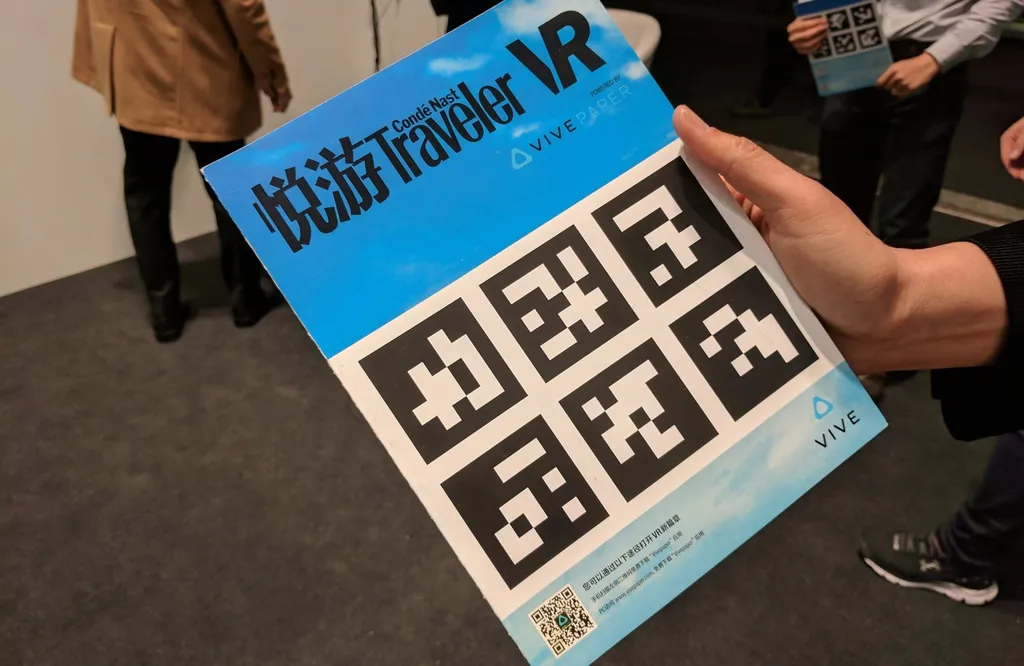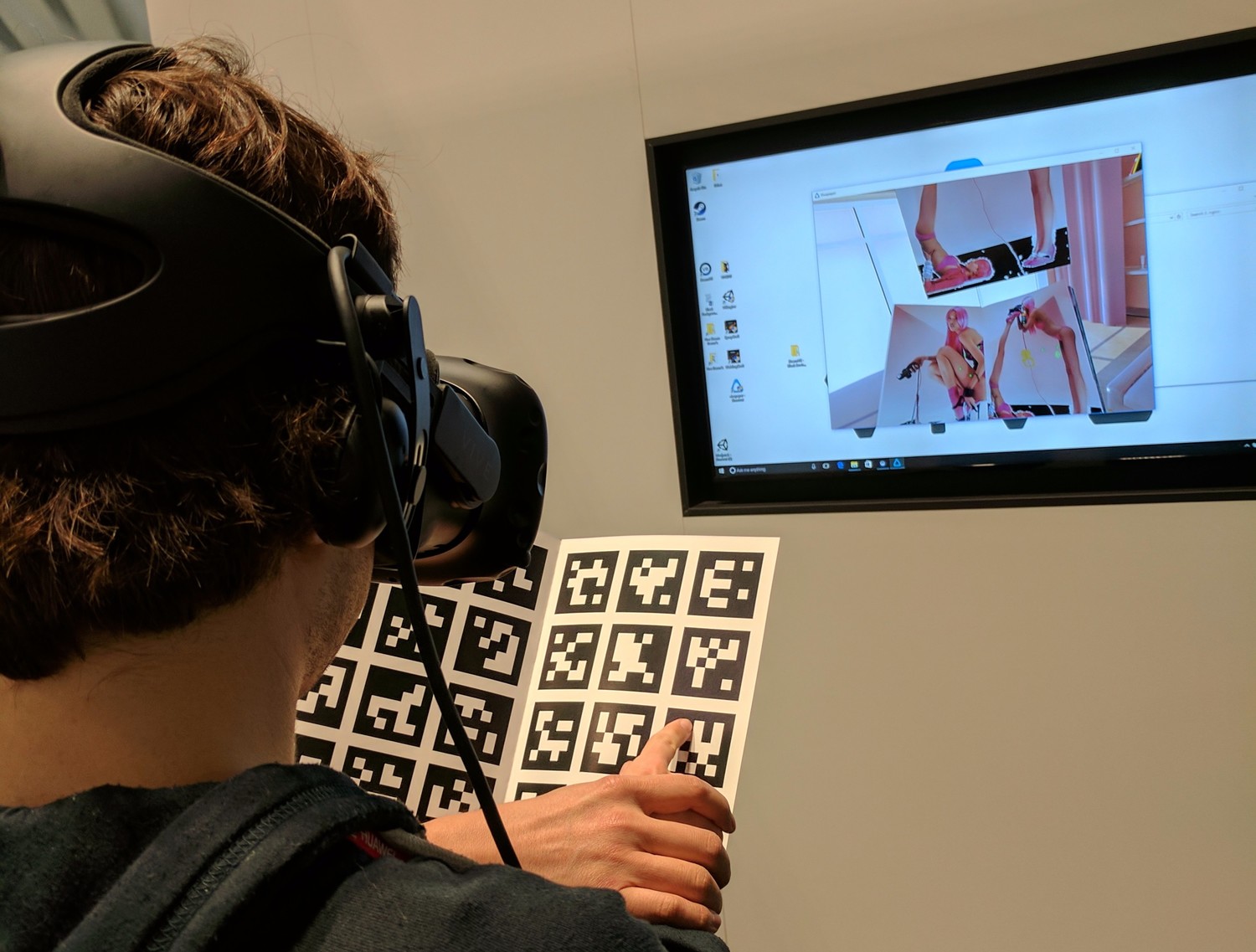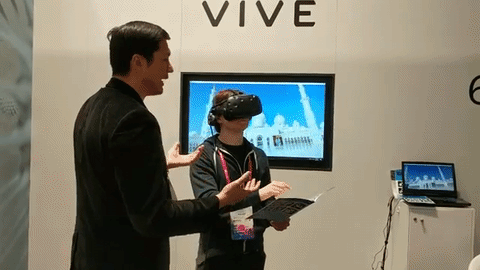Print is dead.
It’s a phrase we’ve heard time and time again over the last decade. The rise of the internet, smartphones, and tablets has led to the decline of the printed word. Newspapers and magazines are no longer the best, fastest way of getting our news and features, and established organisations have thus made the transition to online and diversified into videos, podcasting and more. You might think that there’s no more need for the booklet-based format, but HTC disagrees.
Vivepaper is the company’s attempt to immortalize print. It digitizes monthly issues of magazines, allowing people to read them from inside VR. At first, that might sound a little laborious, but there are several key features to this new platform that make it very intriguing.
First up is the ‘input’, if you will. Vivepaper doesn’t use the Vive’s position-tracked wands. Instead you’ll pick up a thin paper booklet, littered with QR codes on both covers and inside. You’ll hold this up to the headset’s front-facing camera to be scanned, and then you’ll press you hand into the center of the booklet to register it as the input device. Yes, Vivepaper really uses a primitive form of hand tracking. Once you’re scanned in and you’ve chosen your magazine, you’ll open up the booklet and use your finger to swipe through pages and select items of interest.
It’s expectedly buggy, as my hand drops out of the picture every once in a while, but it still works fine as a form of input, and definitely preferable to holding the Vive controllers as you read.
You won’t just be reading with Vivepaper, though, and this is where the app gets really interesting. I select a travel magazine by holding the paper up and pushing it into the virtual cover. The world around me then transforms into a 360 degree picture of a tropical beach, complete with soothing audio. As I flick through the pages, I can highlight text or images to enlarge and make easier to see, combating Vive’s screen door effect. I can also watch both standard and 360 videos around me. In another book there’s even full room scale environments to walk around as I read.
There’s is one crucial thing missing for me to tell you just how effective Vivepaper really is: the English language. Everything I tried was written in Chinese, which is where HTC is pushing the concept right now, but it’s got plans to launch in the west at some point in the future too. With $99.99 Trackers and Audio Straps on the way, paying for another peripheral is probably the last thing you’ll want to do, but you likely won’t have to. The company is talking about releasing its booklet a simple printable document, making it far more accessible for basically everyone with a Vive.
That’s an exciting thought. As I demoed the kit I joked about an UploadVR magazine in Vivepaper, but since then I’ve been thinking about all the cool types of coverage it could lead to. Imagine our previews of games with environments you could walk around as you read about their development, or sitting with us as we talk you through what you’d read in a month’s issue.
There’s still the question of if a lot of people will want to actually use VR for this type of application, and I’m not necessarily convinced they will just yet. Until slipping on a headset and jumping into an article is just as easy as looking it up online, and until screen door effect isn’t an issue, I expect Vivepaper won’t be much more than a novel way of accessing the media that you’ll still more often head to websites for. There’s nothing wrong with laying the foundation for a potential shift, though, and HTC’s quirky concept does so nicely.





























